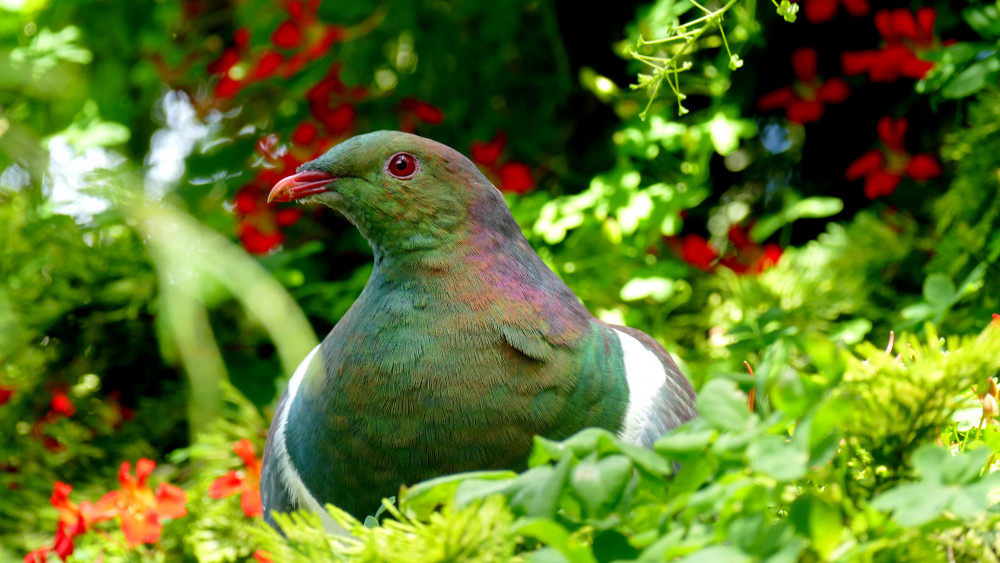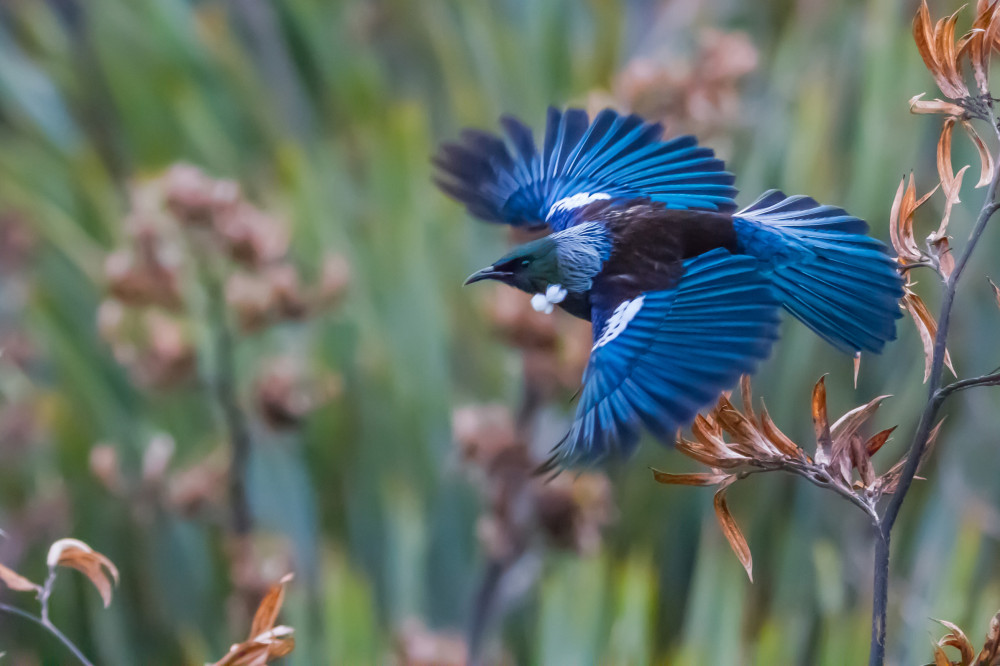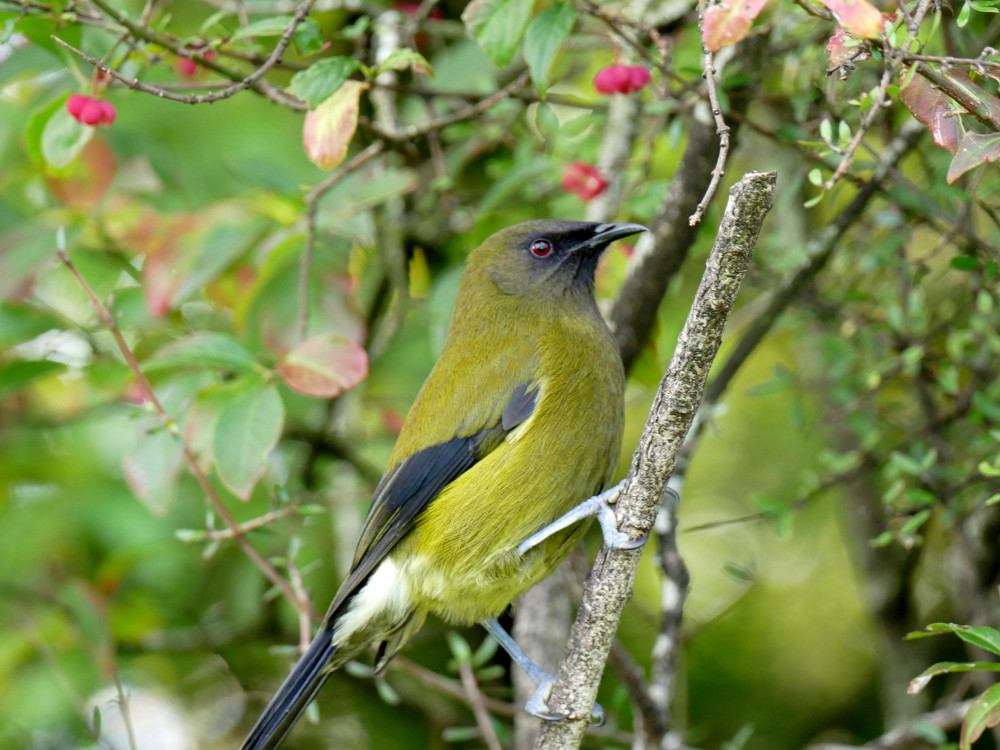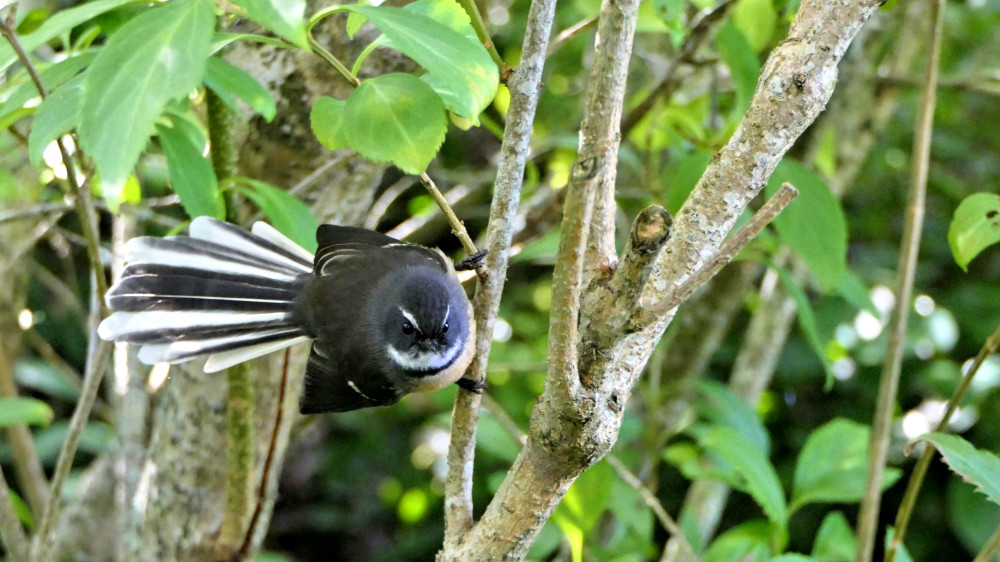Our Wildlife
On the southern coast of our district is The Catlins, where you can meet hoiho, the world’s rarest yellow-eyed penguin, and kororā, the world's smallest penguin. Visitors can view these amazing animals from many vantage points, enjoying their natural habitat. Plus you may get to see the planet's most endangered sea lions, fur seals, and the world’s smallest dolphin. Many of our district’s wildlife are facing rapid decline, so please respect their natural habitat, do not approach them, and keep dogs on a lead.
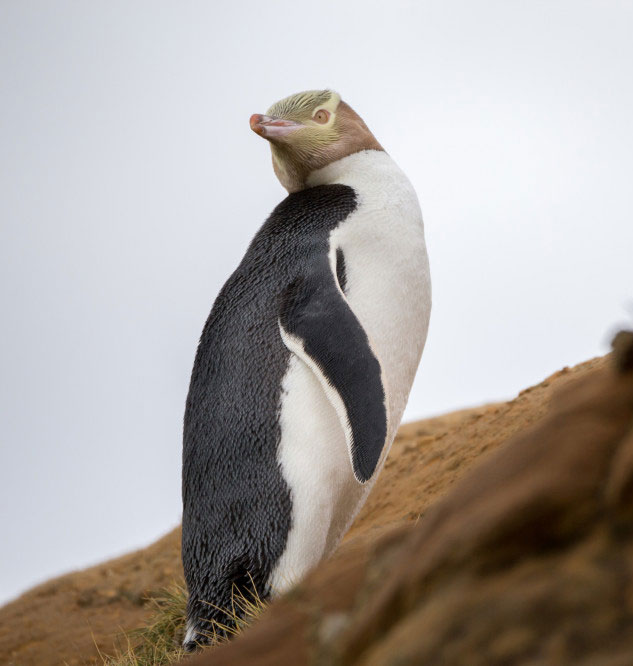
Yellow Eyed Penguins (Hoiho)
Thought to be The World’s rarest and The World’s most ancient penguins with just a few thousand in total, it is a special treat to spot these endangered penguins.
A reserve to protect 10% of mainland population was set up in 2007 at Long Point near Ōwaka in the Catlins. Roaring Bay Hide next to Nugget Point is another place you can spot the Yellow Eyed Penguins.
The Yellow Eyed Penguin known as a 'Hoiho' in Maori is so iconic that it features on the New Zealand $5 dollar note.
Interesting facts:
- Up to 80 cm’s tall and weighing up to 8kg the males are bigger and live longer up to 20 years.
- They don’t nest in visual sight of each other and normally on a slope in forest, scrub, or on beaches facing the sea.
- Nest sites are picked in August and normally 2 eggs laid in September with incubation lasting up to 50 days.
- For the first 6 weeks, one parent guards the chicks while the other hunts for food. When chicks are around 4 months old they become independent.
- First breeding occurs at 3-4 years old and long term partnerships are formed – penguins are famously monogamous with one partner for life.
- They eat fish like blue cod and jellyfish
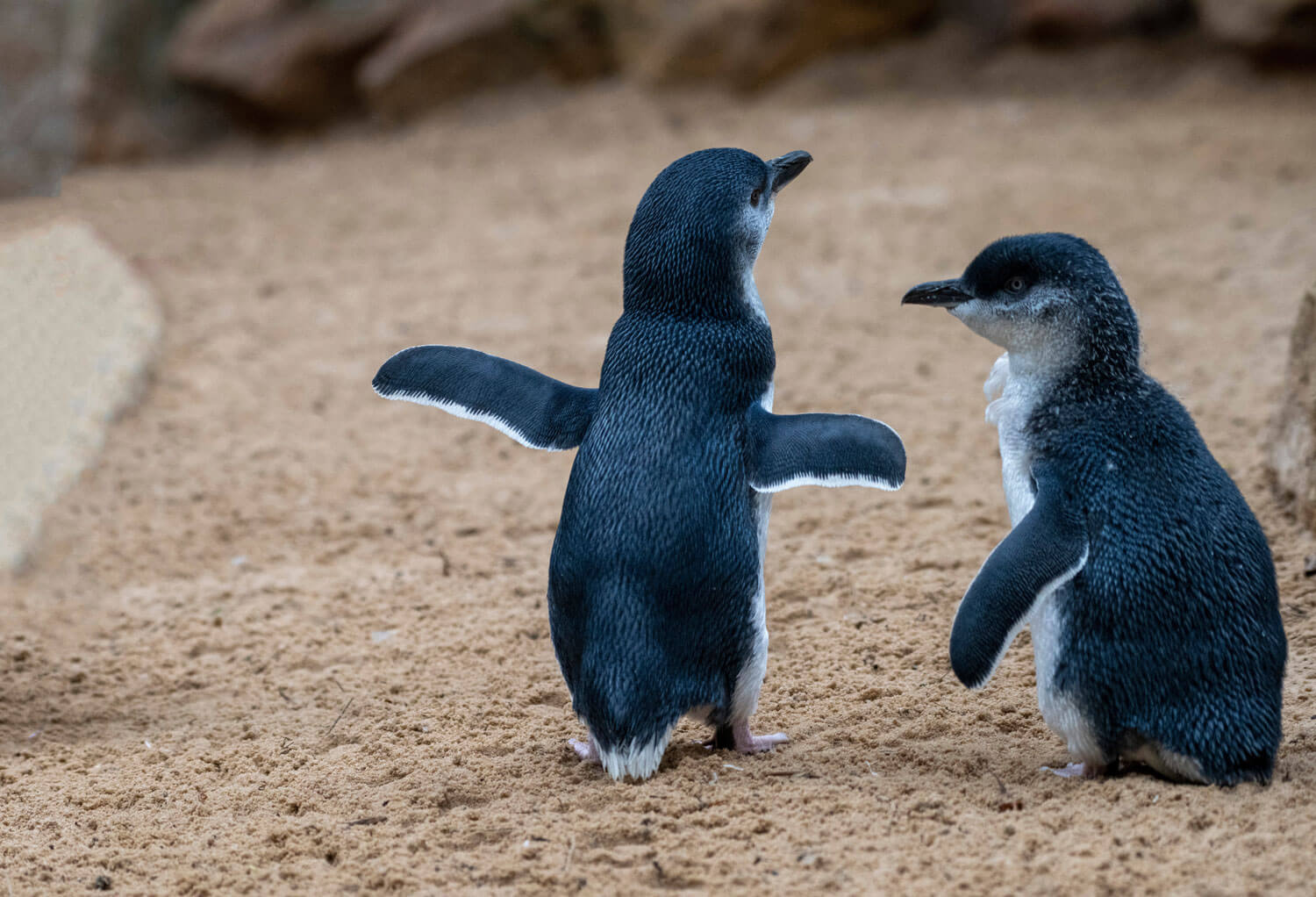
Little Blue Penguin
The world’s smallest penguins are found all along the Catlins coast nesting in caves and burrows. They fish close to shore and come in after dark and go out before dawn so can be tricky to see.
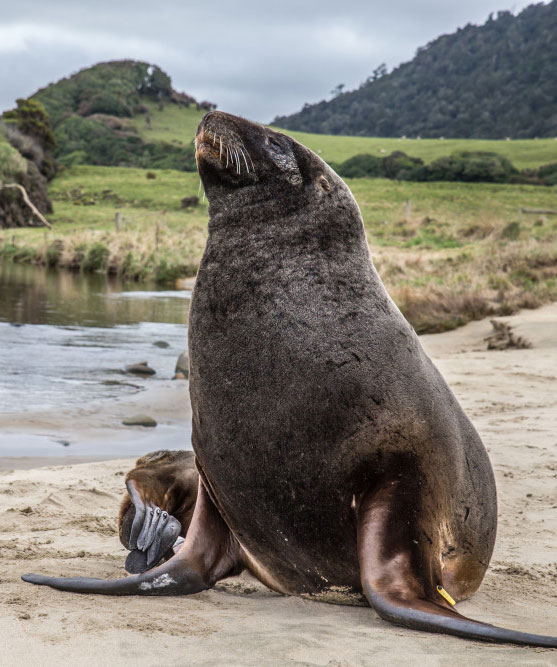
Sea Lions (Hooker’s Sea Lion or Whakahao)
New Zealand sea lions are the most endangered and threatened in The World.
- They are one of the largest New Zealand animals with the males up to 3.5 metres long and up to 450 kg in weight – females are almost half the size and weight.
- Males have darker and longer hair down to their shoulders.
- They tend to return to the same sites.
- They have started to breed again in The Catlins after 150 years of breeding exclusively on remote islands.
- They eat squid, octopus, fish, shellfish, seabirds and other marine mammals.
- Sea lions are hunted and preyed by Great White Sharks.
- Sea lions can get caught in squid nets which has led to new technology to prevent this happening.
- The mainland population is estimated to reach 1000 by 2044.
- Best places to see sea lions in The Catlins: Nugget Point, Surat and Cannibal bays, Jack's Bay, Pūrākaunui Bay. You may also see fur seals at this spots, while elephant seals can often be seen at Nugget Point.
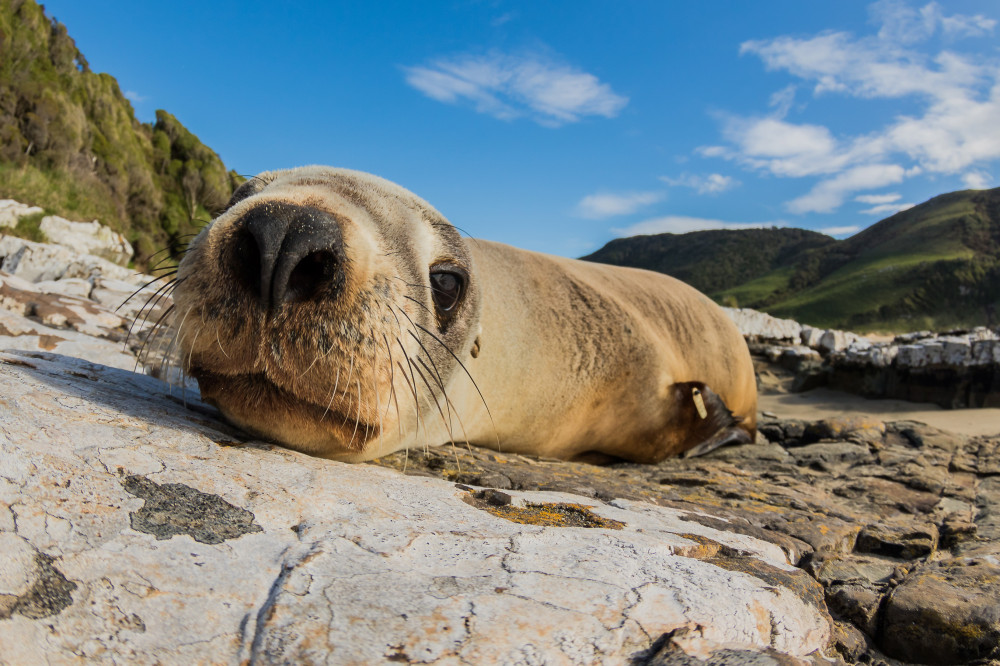
Fur Seals (Kekeno)
- Males weigh up to 160 kg and can reach 2 metres in length, while females are a lot smaller weighing around 50 kg and only 1.5 metres long.
- Fur seals are famous for their whiskers, hind flippers and external ears.
- The males can reach depths of 380 metres, and spending 15 minutes under water.
- They use a bark or whimper to communicate.
- Females only mate once a year and continue to reproduce till they die, which is usually 14-17 years old.
- Pups are born in the summer and often leave their parents at 9 months old.
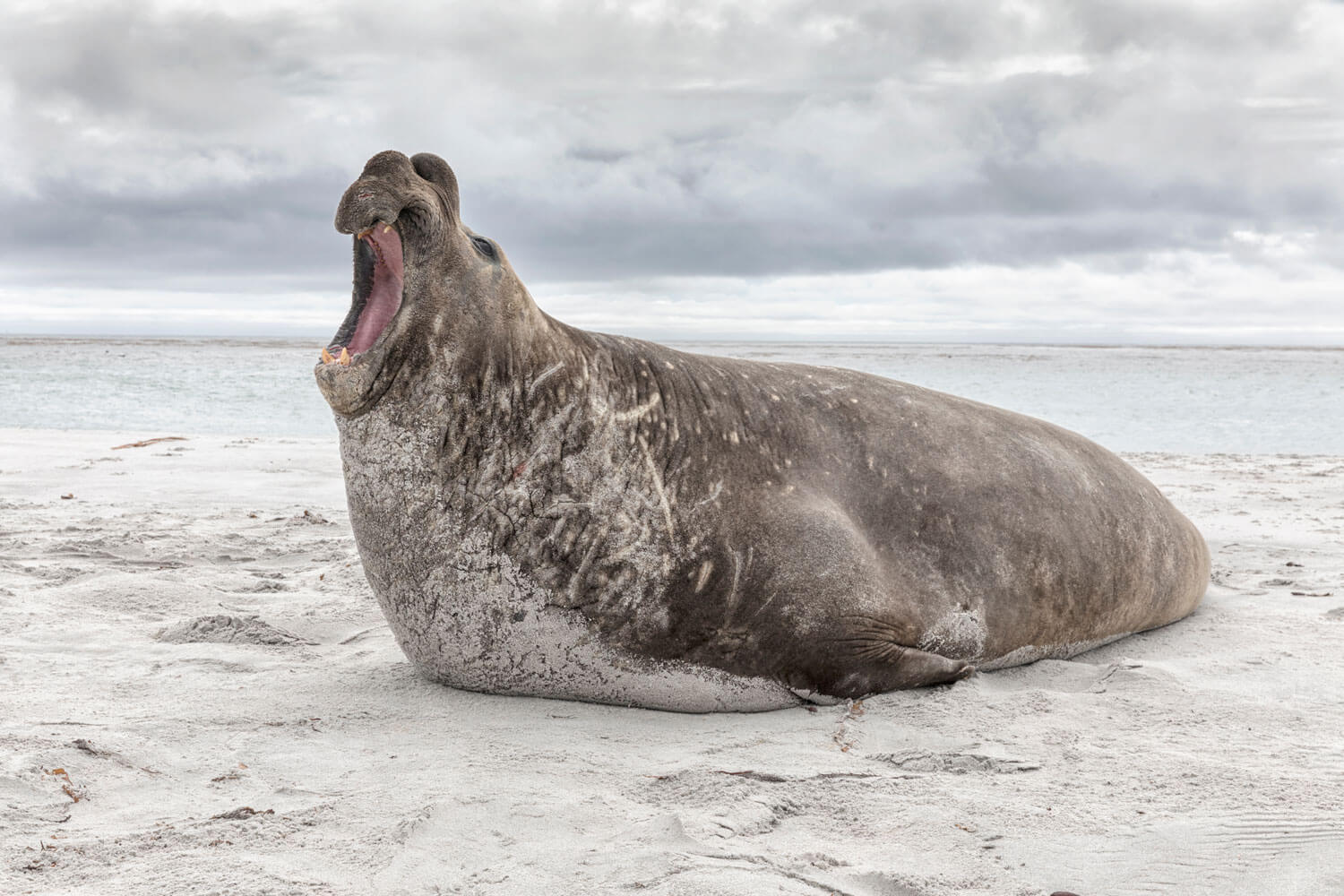
Elephant Seal
These large earless seals take their name from the male or bull’s nose which looks like an elephant’s trunk. It is used to make load roaring noises especially during the mating season, and is also used for saving water.
Exceptional males can be up to 6 metres in length and weigh up to 4,000 kg! Our Southern species are bigger than those in the North.

Hector's Dolphins
- The World’s smallest dolphins are around 1.5 metres in length and up to 60 kg in weight, with females being both slightly longer and heavier.
- Famous for their rounded dorsal fins.
- They look grey from a distance but are far more colourful with light and dark grey, black, and creamy white.
- Hector calves are up to 80 cm long and 10 kg with vertical pale stripes until 6 months old.
- Hector's Dolphins often stay in shallow water down to 100 metres.
- The biggest threat is fishing and getting trapped in nets which has led to marine protection areas being set up.
- The best places to see these lovely creatures is at Curio Bay.

Trees in the Temperate Rainforest
Ancient Podocarps rule the Catlins Conservation Area with Rimu, Mataī, Tōtara and Kahikatea with other species like Kāmahi and Rātā.
- Silver Beech are found further inland.
- Penguins are naturally shy and easily stressed – please stay out of sight
- Sea Lions and seals need space - stay at least 20 metres away
- Do not take plants, animals or fossils – please protect nature
- Control dogs as they can be a major threat to both penguins and seals
Bird Life
Frequently Asked Questions (FAQ)
The Catlins is home to a wide variety of marine life, including hector's dolphins, seals, New Zealand sea lions, and a number of bird species.
Yes, The Catlins is home to both yellow-eyed (hoiho) and little blue penguins, although sightings of these birds can be quite rare.
Some of the best places to spot wildlife in The Catlins include Nugget Point, Roaring Bay, Surat and Cannibal Bays, and Curio Bay.
Yes, Lyndon from Catlins Tours offer guided wildlife tours in The Catlins, which can provide you with the opportunity to see some of the area's most unique and endangered species.
It is important to keep a safe distance from wildlife in The Catlins and not to disturb their natural habitats.
Sea lions can often be seen lounging on the beaches of The Catlins, such as Surat Bay, Cannibal Bay, and Nugget Point.
Sea lions can often be seen lounging on the beaches of The Catlins, such as Surat Bay, Cannibal Bay, and Nugget Point.
The best place to see yellow-eyed penguins in the Catlins is at the Roaring Bay penguin viewing hide.
The Catlins is a birdwatcher's paradise, with a range of species including the tūī, bellbird, kererū (native pigeon), kākā (forest parrot), and the rare New Zealand falcon.

